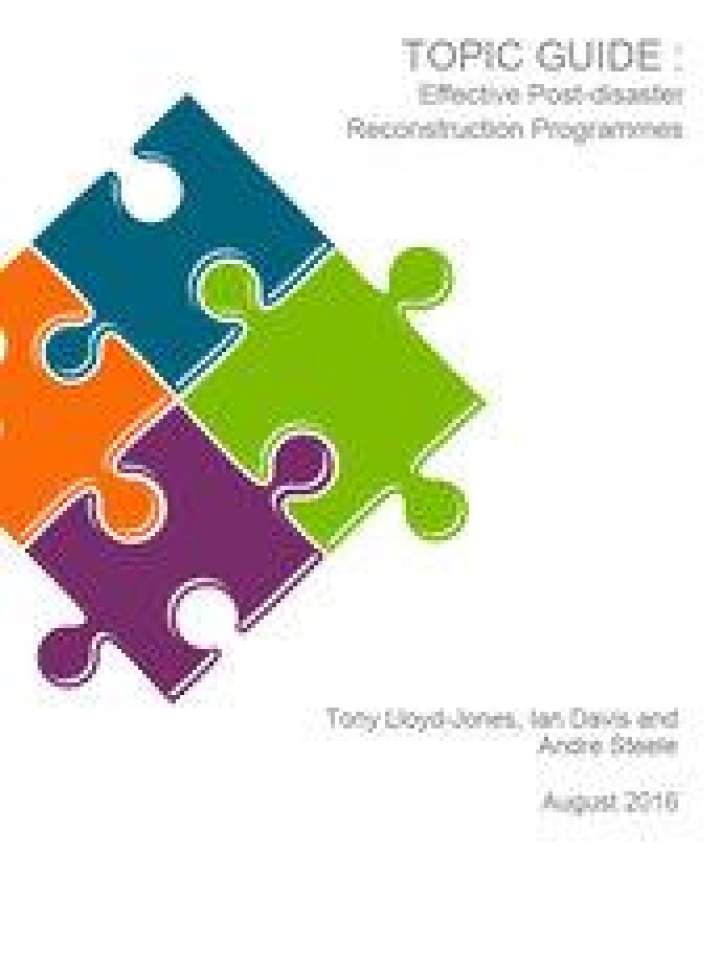Effective post-disaster reconstruction programmes
This topic guide is a review of the state of play in post-disaster reconstruction. It builds on extensive research, literature and experience to date, most recently considering outputs from the 2015 Sendai Conference on Disaster Risk Reduction (DRR). It considers the status quo and puts forward alternative positions for facilitating effective reconstruction through a more seamless and re-planned approach.
The conclusions of this publication are the following (p. 57):
- It is critical to set in motion a continuous, timely and cost-effective process of reconstruction and recovery after a disaster with a clear understanding and fine-tuning of the roles and efforts to be contributed by different actors.
- All pre- and post-disaster efforts have to be seen as part of an interrelated, coordinated and continuous process of promoting sustainable development and building resilience.
- Reconstruction should be seen as an integral part of the pre-disaster planning and should be based on good local knowledge of both the damage and the needs.
- Any attempt by international NGOs to recruit government employees at inflated wage levels to assist their own operations must be resisted since this further weakens a depleted government capacity.
- Disasters present unique opportunities, not only for new or improved infrastructure but also to improve the built environment and restore the natural environment as well as to strengthen institutions, processes and mechanisms.
- Enhanced protection and efforts should be directed pre-disaster towards strengthening critical infrastructure, essential cultural assets, and other resources needed for emergency management. These should also receive priority protection in reconstruction.
- Reconstruction should be specific and tailored to relevant hazards, such that there is appropriate seismic design for earthquake zones and sustainable flood management where required.
Explore further
